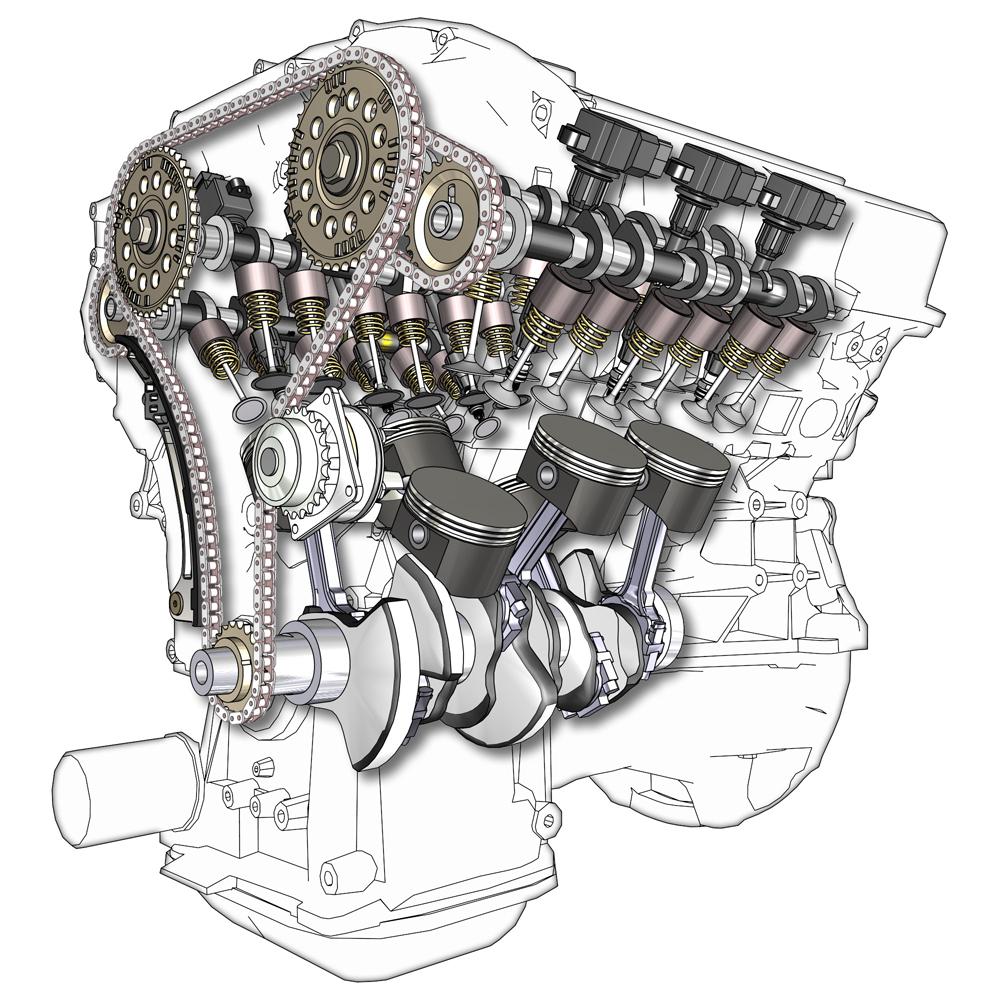
In this article, we will mention the major types of engines, the seven main types of engines are:
- Inline Engine
- Flat Engine
- Radial Engine
- V configuration Engine
- Boxer Engines
- W configuration Engines
- VR6 configuration
But our spotlight and focus will be on the V6 configuration engines Vs. Inline 6 engines.
Inline 6 engines (it is also known as I6 and Straight 6 engine), was firstly produced by Spyker in 1903, Spyker is a Dutch automobile, aircraft and, carriage manufacturer started in 1880 in the Netherlands. Six years later, in 1909, about 80 manufacturers, including Ford, started production of the inline 6 Engine due to its simplicity and reliability.
Advantages of the I6

- Simple design since there is no need for cylinder offset or different sets of valve trains like the V configuration.
- Using half of the crankshafts needed in the V configuration (4 cam 24v in V configuration)( 2 cams for 24 valves in l6).
- Easy access to the sideways of the l6 engine like spark plugs and intakes leads to more straightforward general maintenance.
- The most significant advantage of the l6 is the balance due to the pistons’ normal firing order mirror image movement. Meaning that the reciprocating balances each other out makes it a very smooth revving engine like the S50, 2JZ, and RB26.
Disadvantages of the I6

- I6 is a long engine that can’t fit sideways, making it very hard to achieve a front-wheel-drive setup.
- The long engine and its components lack rigidity, the long cam-shafts and crankshaft naturally try to flex while rotating along in with the engine block lacking the stiffness with its V6 equivalent.
V6 engines are commonly used in front-wheel drive vehicles, and the V6 engine developed in 1905 by Marmon Motor Car Company, but it didn’t become popular before 1950 when it got used by Lancia Aurelia V6 and Buick Special V6 in 1962, V6 engines have qualifications that made them the most commonly used.
Advantages of V6
- The V6 is a more compact engine due to its cylinder offset that Produces More power than the I4 engine, and it usually comes in 60° or 90° configuration, which makes it a better unit for multiple manufacturers like the all-new Nissan GTR R35 and Honda NSX.
- Precious space offered by the compact package also opens the doors for forced induction, leaving room for turbo charges.
- Front-wheel drive vehicles can also use V6 engines more recently, like the Mazda mx6, which uses squeezed 2.5 liters V6 engine.
- V6 allowed the car companies to easily produce high performance without having to change the chassis dimensions drastically.
- V6 engines produce higher torques at lower RPMs because of the power stroke coming two sides of the crankshaft.
Disadvantages of the V6

- V6 is a more complicated engine than its opponent I6, and it uses double the Cam-shafts than the I6 that increases the complexity, which makes it harder to work with such an engine.
- V6 have a very complex balancing design and components because it acts like a pair of 3 cylinder engines stuck together that need balancing shafts to decrease vibrations against the crankshaft and make it a smoother engine at high RPMs, which drastically increases the production cost of the engine and surely the maintenance cost.
Why a V6 engine is better than an I6 engine?
A V6’s design is more complex than an inline six’s, but its compact, square form offers many benefits. The compact size of the V6 engine makes it fit into many different vehicles, and make it a better option for performance cars. The V6 has been the standard option for current six-cylinder engines due to its high reliability.
No comments:
Post a Comment